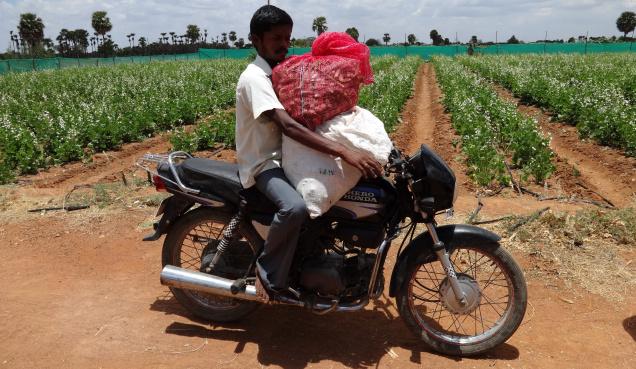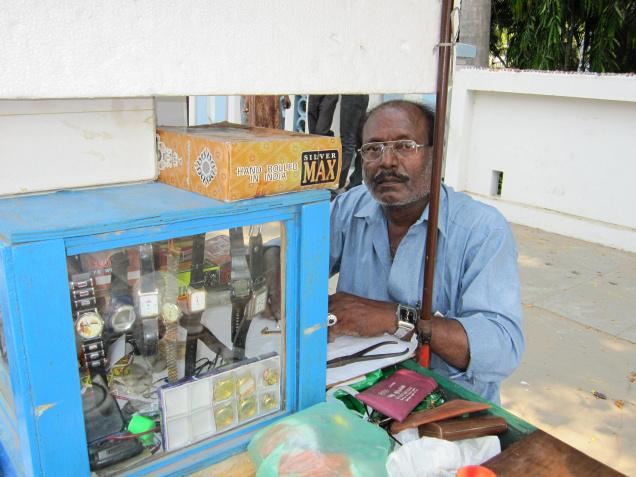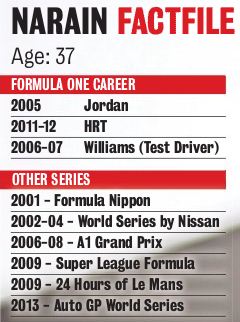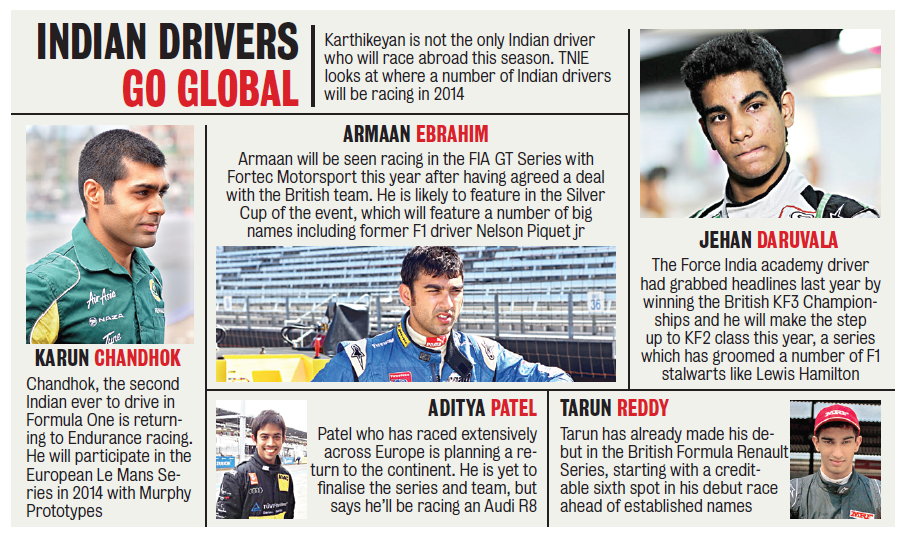
Thottiankulam village on the Sevaiyur-Tuticorin highway in Virudhunagar district is bone dry all through the year. Farmers, mostly small and marginal, have either left the place seeking work in towns or have moved to other vocations.
In the midst of the vast expanse of empty fields dotted with palm trees here and there, a small patch of greenery catches attention. A group of people are busy tending to the green patch of vegetables, all grown organically.
Short term
The green patch which has been attracting a number of visitors driving on the highway has been made possible by an organisation called Saal (Sustainable Agro Alliance Limited) in Madurai, which has been encouraging struggling small farmers to take up short-term vegetable cultivation.
This programme, supported by an organisation called Christian Aid with technical support from Change Alliance, is fast proving to be a significant intervention in terms of gathering adequate and robust evidences to confirm that small-holder agriculture is feasible.
“The key mantra behind successful production lies in creating better environment. The first step in this process is to focus on the soil and not on plants. A healthy soil gives good yield. And in our system we take care to conduct soil analysis, enrichment using cow dung, cow urine, and humus obtained from dried leaves, agriculture wastages etc to make the barren land productive,” says Mr. B. Jeyabala Murugan, Chief Executive Officer, Saal.
The next step revolves around building an immune system for the plants. The seeds and seedlings are treated with good fungicides and bacteria to form a layer around the roots. This protective layer bestows immunity against soil borne diseases.
Border crops, inter crops, trap crops and multi cropping are also taken up. Farmers are taught to prepare herbal pest repellent using locally available materials.
All about arithmatic
“Our organic process is all about maths. We can predict yield as long as we follow the guidelines for vegetable variety, field size and plant population. It guides us to achieve desired production,” says Mr. S.Henry Joe, Operations Officer.
The final step is helping in marketing the produce. Effective marketing is the ultimate step for success in any agriculture work. With all the hard work done in the farm, if the produce is not fetching the due price then everything is a waste. Saal has facilitated some innovative, transparent and reliable market access to the growers.
High demand
“Local production, local consumption is our motto and our value chain process encompasses farmers, consumers and traders. Our pricing policy is based on a mix of conventional and niche market segments to increase consumption and thereby achieve higher demand, which help operate supply chain efficiently,” says Mr. John Suresh Kumar, Senior Programme Officer.
Already in three adjoining districts the organisation has established a supply chain for organic vegetables. The balancing of supply and demand is done through an online programme to track, trace and synchronise production and marketing and communication strategy
“We provide the farmers with live education in the farm, offer them bio inputs in initial stages of process, provide expert guidance in their field and attend to emergency situations. Those who have adopted this process have noticed that their plants are not only immune to diseases, they are better tolerant to changing weather conditions. The plants are better drought tolerant (could survive for more than seven days without water.),” explains Mr. John.
Shelf life
The life of the vegetable crops has extended significantly — say, from four to eight weeks — and they are able to get yield continuously. This extended vegetable yield has helped earn more income through better pricing in the market.
The small patch of organic greenery has also been seeing a number of insect activities and visits by birds, butterflies, and bees, creating a sort of biodiversity in the region.
The farm, on day-to-day basis, is managed by a supervisor, farm manager and six trained farmers. Presently more than 120 organic vegetable growers from Madurai, Virudhunagar and Dindigul districts are part of a similar programme and 100 more are expected to join soon.
For more information and personal visits interested readers can contact Mr. John Suresh Kumar, Senior Programme Officer on email:jnujohn73@gmail.com, mobile: 8287755019.
source: http://www.thehindu.com / The Hindu / Home> S & T> Science / by M. J. Prabu / April 16th, 2014







